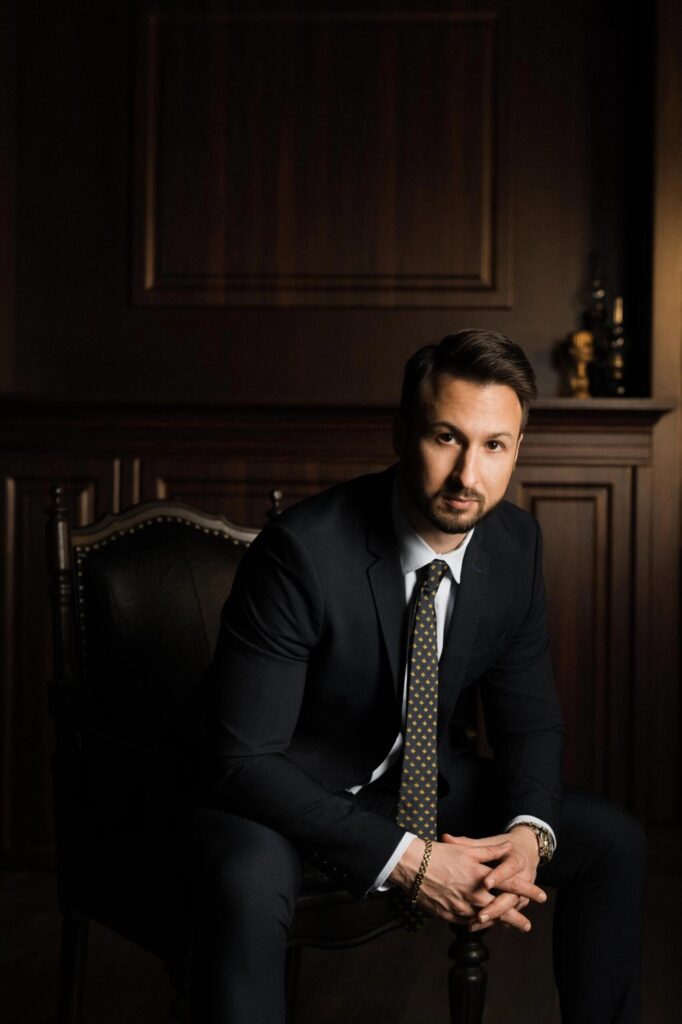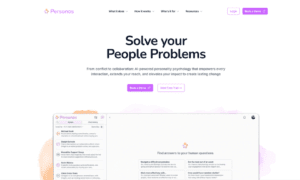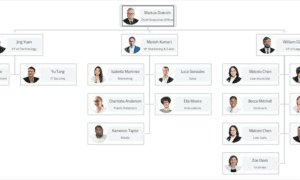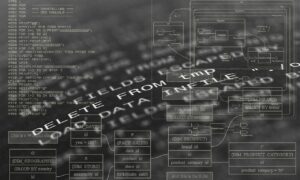This is an interview with Maxim Sheaib, Executive Leader in Business Strategy, Policy Execution, and Geoeconomic Systems
Can you introduce yourself and share your current role in management? What unique perspective do you bring to the field?
Innovation begins where systems are stretched, and vision refuses to wait. I lead the convergence of business, governance, and transformative development. My current role focuses on shaping the next generation of health and well-being ecosystems where capital meets care, and performance meets long-term purpose. I do not operate within standard labels. I work where strategies must be designed from zero and institutions are expected to function before fully forming.
My perspective is different because I am not advising from the sidelines. I build. I have delivered projects across over a dozen countries, scaled ventures from inception to execution, and driven national-level programs that connected regulation, investment, and public trust. Whether navigating global supply chains in a crisis or designing large-scale well-being and health tourism ecosystems, I work at the frontier of complexity where leadership is tested in real time.

How did your journey in management begin, and what key experiences shaped your leadership philosophy?
My path into management began with a fascination for how ideas become systems and how systems, when well-built, empower people to perform at their best. Early in my career, I led teams across cross-matrix organizations and divisions. What shaped me most was not pressure but possibility. I was drawn to challenges where I could turn abstract strategy into real-world outcomes, and building meant more than planning, and leadership meant mobilizing people around purpose.
A defining experience came when I was tasked with scaling a health-driven business across multiple markets and co-founded my own ventures. We were building more than just a company; we were designing an ecosystem for growth, performance, and trust. It taught me that excellent management is not about directing people. It is about creating the rhythm, tools, and clarity that allow others within the strategic and operational landscape to rise.
What guides my leadership today is performance logic. It is the art of aligning intent with systems, making every layer of an organization speak the same language, and removing the noise that gets in the way of great work. To me, that is where leadership becomes transformation.
You’ve mentioned the importance of timing in leadership interventions. Can you share a specific instance where holding back and allowing a situation to unfold naturally led to a better outcome?
Silence does not mean inactivity. Timed interventions and holdbacks are sometimes the most strategic form of leadership. Tensions began rising between two senior stakeholders during a high-stakes partnership negotiation. Instead of stepping in to mediate, I allowed the room to hold its weight. I had already seeded alignment in prior one-on-ones and trusted the groundwork. Within minutes, one side reframed the issue, and the other followed with a concession that unlocked the gridlock. Relational pacing is the discipline of trusting timing, resisting premature intervention, and letting latent alignment surface when space is created. My presence did not change the outcome, but it was my pause.
In your experience, how have you implemented ‘structured flexibility’ in PTO policies? Can you provide an example of how this approach improved team performance and well-being?
Most companies either over-engineer time off or leave it too open. The answer lies in structured flexibility, a balance between autonomy and rhythm that gives people space without losing team coherence.
At one point, I led a high-intensity strategic initiative, and the team had been under continuous pressure for months. Instead of relying on generic PTO policies or letting burnout surface, we implemented a precision reset model, tying rest to operational rhythms. For example, once a deliverable was signed off, each function had a pre-approved recovery period built directly into the timeline, not as an exception but as a structural norm. This was a deliberate phase of the performance cycle.
In the following quarter, we saw a measurable 18 percent increase in on-time delivery, and cross-functional collaboration scores jumped in our internal pulse survey. When rest is programmed with intention, it shifts from being seen as an interruption to being recognized as part of sustained output. That’s how structured flexibility becomes a performance asset, not a policy.
You’ve discussed using the V2MOM model for cultural alignment. How has this method helped you address and overcome specific challenges in maintaining authentic company culture?
Vision, Values, Methods, Obstacles, and Measures (V2MOM) have been some of the most effective tools I’ve used to translate culture into a live, operational language. Culture breaks when people can no longer connect the way or the why to the how. V2MOM helped us fix that by making values actionable, not abstract. During a significant restructuring, we used it to align teams around a shared purpose. Each unit defined its version of success, how they would get there, and what stood in the way. One team struggling with clarity rebuilt its methods around a single customer-centric goal. Delivery time improved in just weeks, and internal engagement increased. V2MOM gave people ownership of the path, which makes culture stick.
Given your insights on AI in health environments, how do you envision AI tools enhancing performance review processes in other industries? Can you provide a concrete example?
AI is transforming performance reviews in the healthcare industry by providing real-time, data-driven insights that enhance employee development and patient care. For instance, Sword Health’s AI-powered platform, Phoenix, utilizes natural language processing and computer vision to deliver immediate feedback during therapy sessions. This innovation improves the accuracy of treatment plans and allows for more personalized performance assessments of therapists, leading to better patient outcomes and increased staff engagement. AI will transform performance reviews from backward-looking scorecards into forward-looking development systems. This fundamental shift will be augmented by tools like Salesforce’s Einstein and Microsoft’s Copilot, which are already used to track behavioral data, project contributions, and communication patterns to build more dynamic performance narratives. AI is there to surface the whole picture, guide growth, and make the review process more intelligent, fair, and continuous.
You mentioned receiving feedback about ‘speaking in systems, but they’re hearing in silos.’ How did you adapt your communication style to bridge this gap, and what impact did it have?
I learned that clarity translates complexity into what matters most to the listener. I shifted from leading with logic to leading with relevance. Instead of presenting full frameworks, I began framing every idea with what the person across from me needed to solve. I still think systemically, but I deliver in what I call “cognitive anchors” — short, vivid, outcome-driven statements that connect directly to someone’s role or risk. The impact was immediate. Engagement rose, execution improved, and meetings became accelerators rather than alignment exercises. I realized then that influence is how well others can act and react because of what you say and deliver.
In your view, what’s the most underrated management skill that emerging leaders should focus on developing? Why is it crucial in today’s business landscape?
Today’s most underrated management skills are adaptability, the ability to pivot, resilience, and narrative precision, specifically in communicating a strategy that aligns people, sharpens intent, and sustains clarity under pressure. In today’s environment, uncertainty is the only constant, and teams don’t need more information. They need direction that adapts as fast as reality changes. Harvard Business Review highlights that “adaptive leadership depends not on charisma, but on the clarity of narrative that binds teams to a shared purpose.” That’s the foundation of coherence, where communication is the glue that holds resilience, adaptability, and execution together. Resilience is about having a shared compass when the path shifts. And adaptability is a strategic interpretation and steering to pivot. Leaders who build narrative precision into their culture move through strategy with cohesion and purpose.
Looking ahead, what do you believe will be the biggest challenge for managers in the next five years, and how are you preparing yourself and your team to address it?
The most formidable challenge for managers in the next five years will be mastering anticipatory leadership, the capacity to foresee emerging trends, proactively shape strategies, and navigate complexities before they escalate. Reactive management is no longer sufficient in an era characterized by rapid technological advancements, shifting socioeconomic landscapes, and evolving workforce expectations. Adaptive leadership hinges on anticipating future needs and articulating these needs to build collective understanding and support for action. This proactive stance enables organizations to avoid disruptions and maintain strategic agility. Cultivating a culture of strategic foresight within the team is crucial to prepare for the future. It involves implementing scenario-planning exercises, encouraging continuous learning, and leveraging data analytics to identify early change indicators. By fostering an environment where adaptability is ingrained, leaders should aim to transition from a crisis-management mindset to one of opportunity capitalization. In essence, the future will favor responsive and visionary leaders who can anticipate change and mobilize their organizations accordingly. By embracing anticipatory leadership, we position ourselves to withstand the uncertainties of the coming years and thrive amidst them.
Thanks for sharing your knowledge and expertise. Is there anything else you’d like to add?
The future will be defined by how precisely we can act on what we understand and anticipate patterns, behaviors, and build legacy systems for generations to come. Leaders today must move beyond managing uncertainty and learn how to sculpt clarity from it. The most valuable skills are synthesis and calibration. Whether you are building a policy, a business, or a culture, the real test is whether it can adapt under pressure without losing its logic. The world doesn’t need more vision statements. It needs people who can convert vision into systems that perform. That is where the real impact lives.



































